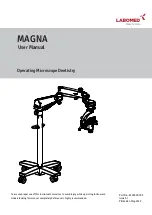
35
7.
Percussion should continue through two complete ventilator cycles to
allow ventilator to deliver several machine breaths.
8
Adjust pressure relief valve, depending on which ventilator mode is used,
and observe visible chest movement.
9.
Monitor breath sounds and observe pulse oximeter for oxygen saturation
improvement.
10.
Observe aerosol mist in nebulizer bowl.
11.
Therapy should continue for approximately 15 to 20 minutes,
or
per institutional/hospital protocol.
NOTE:
If chest percussion is inadequate, increase inspiratory flow or raise drive pressure
(psi gauge) and scan frequency rate to mobilize secretions.
NOTE:
Percussive frequency and inspiratory flow can be adjusted to increase and
decrease the amount of “chest movement (wiggle)”.
NOTE:
Suctioning should be performed as needed.
NOTE:
It may take multiple treatments to identify optimal therapeutic effect for
each patient.
Completion of Therapy with In-Line Valve
1.
If cuff was deflated during treatment, reset cuff pressure.
2.
Turn off IPV®-2C controller.
3.
Close Pressure Relief valve (knob).
4. Disconnect Phasitron® 5 from TRUE-IPV® In-Line Valve and store appropriately.
5. Restore ventilator to settings that were present before starting TRUE-IPV® treatment.
6.
Remove cap from Phasitron® 5.
8. Keep In-Line Valve in the ventilator circuit
with plug inserted until next use.
NOTE:
Clean and disinfect In-Line Valve as needed per institutional protocols.
In-Line Valve is intended to stay in the ventilator circuit.
7. In-Line Valve remains in the ventilator circuit
between uses. Insert plug into the Phasitron® 5
port of the In-Line Valve until the next use
.










































